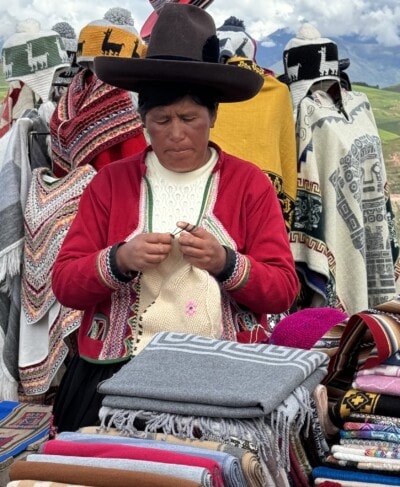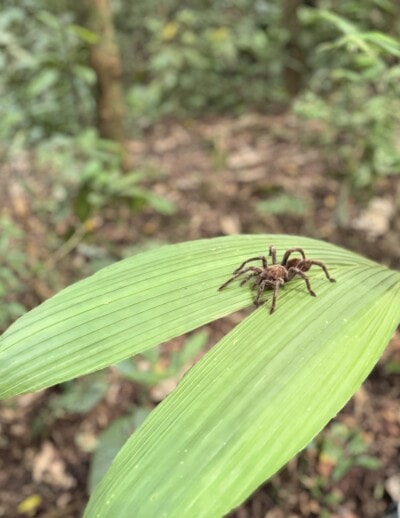Peru and Delfin III Amazon River Cruise
By Mary Levine

If Peru is on your travel list (I don’t say ‘Bucket’ because it implies ‘the end’) to visit, don’t wait! Now is the perfect time to explore this beautiful, diverse country. A quick overview of Peru: wonderful people, culture, history, archaeological structures, culinary variety, scenery, The Andes, wildlife, and nature at their finest! Peru is one of the most biologically diverse countries in the world in terms of fauna and flora. The Andean Condor is the largest flying bird in the world. Unfortunately, I did not get to see the condors, that will have to be on my next trip!
I’ll share the highlights of my trip with you and then you can decide for yourself how we can plan the perfect itinerary for you.
Beginning in Lima, the entry point for most trips. Lima is the largest city, and the connecting point for flights in all directions. I connected to a flight to Cuzco or Cusco. Elevation in Peru varies greatly and should factor into everyone’s itinerary planning. No one in our group suffered from altitude sickness, and with some planning, you should be able to avoid it. The elevation in Cusco is 11,152’ and we were instructed to drink a minimum of 2 liters of water per day beginning 2 days before arriving in Peru. Also, don’t stop drinking (water) while at higher altitudes.
 From Cusco, we headed to Machu Picchu City (7,972’) but first, we stopped for lunch at Chicha Restaurant by Gaston Acurio. Peru has a variety of culinary options, and dietary concerns are not a problem. Our group consisted of no meat, no seafood, dairy, and no dairy diets to consider and no one starved or left hungry! The next stop was the Ollanta train station for a one-way transfer on Inca Rail from Ollantaytambo to Machu Picchu. Our first-class ticket included delicious snacks for the 1.5-hour journey.
From Cusco, we headed to Machu Picchu City (7,972’) but first, we stopped for lunch at Chicha Restaurant by Gaston Acurio. Peru has a variety of culinary options, and dietary concerns are not a problem. Our group consisted of no meat, no seafood, dairy, and no dairy diets to consider and no one starved or left hungry! The next stop was the Ollanta train station for a one-way transfer on Inca Rail from Ollantaytambo to Machu Picchu. Our first-class ticket included delicious snacks for the 1.5-hour journey.
On arrival at Aguas Calientes/Machu Picchu Town, we walked about 3 blocks to our hotel for the next 2 nights – Sumaq Machu Picchu Hotel. Our host was the delightful Mr. Anibal Clavijo, the owner of Sumaq Hotel. Mr. Clavijo and his father built the hotel, and both his sister Angie, and his wife, Juliana, are involved in every aspect of the hotel. Sumaq Hotel sits on the banks of the Vilcanota River and at the foot of Machu Picchu. The hotel exudes everything Peru from all the furniture, textiles, art, and cuisine, and works closely with local communities and the Rainforest Alliance to promote Peru. They have a strong commitment to sustainability and protecting the natural environment. I recommend booking a room with a river view and opening your windows at night to be lulled to sleep by the rushing water from the Andes.
The next morning, we met our guide and Shaman at the hotel lobby and walked a block to catch our bus to Machu Picchu, a 20-minute scenic ride to the entrance of Machu Picchu. It was a unique experience to have a well-versed, very educated guide to provide an in-depth overview of Machu Picchu, and an authentic shaman from the Scared Valley of the Incas. The shaman was a soft-spoken, gentle being who kindly and without judgment shared the mystical and cosmic world of Andean beliefs. We each had a one-on-one spiritual ceremony led by the shaman which was unique to each of us. There is no right or wrong way to experience the ‘energy’ of Machu Picchu but not one of us will deny that there is a unique energy within the surroundings of Machu Picchu. We did not climb or hike any of the 4 mountains but, plenty of other visitors did and it was amazing to watch how they navigated the heights, and shear bravery in my book 😊
After about 4 hrs. at Machu Picchu, we went back to the hotel for lunch and some free time. Dinner was a tasting menu with signature cocktails. It was wonderful to experience the hospitality of the staff at Sumaq Hotel. The chef and his team in the kitchen were very proud to highlight their skills, and they did not disappoint.

This day we traveled by Rail Peru back to Ollantaytambo (Scared Valley at 9186’ elevation) and met our guide for a tour of the last refuge of the Inca resistance. There is no shortage of archaeological sites at each stop. The history is fascinating. We stopped at UNU Restaurant (Landscape to Gastronomy) in Maras with a stunning view of the Andes, the Scared Valley, and the Chicon Mountains. Trying to absorb all the history is very interesting and my special hint is nourishment is vital. After lunch, we went to Moray, an Inca experimental farm from eons ago!
The natural depression was transformed into several concentrically superimposed terraces like a great coliseum. From there we stopped at the Maras’s salt mine platforms. The salt flat is fed by an underground hypersaline spring that originated 110 million years ago during the formation of the Andes.
We spent one night at Tambo Del Inca in the Scared Valley. Tambo Del Inca is a Marriott Luxury Collection resort and spa that sits on the Vilcanota River, with views of the Andean peaks. I was thrilled to use the indoor/outdoor pool before dinner, and again the next morning. The spa is lovely, and after a full day of touring, who wouldn’t enjoy a swim, sauna, or massage? We only stayed one night but I would have enjoyed an extra day exploring the town which is within walking distance from the hotel.
Keeping to our schedule, we left the next morning for Cusco for one night. We are now back at 11,152’ in elevation but, it is not as noticeable because of our gradual increase over the last 2 days. However, you must continue to hydrate to avoid any discomfort.
Our first stop was a cooking class in Cusco with Marcelo Batata, a chef who now teaches a gastronomical journey into the diverse landscapes of the Peruvian coastline, highlands, and jungle. We started with a selection of fruits, then on to the “pantry” with an abundant array of produce and products that make up the diverse cuisine of Peru. Next, we tried our hand at Ceviche and Lomo Saltado with Alpaca. The Ceviche is a national dish that varies from region to region. I never tire of Ceviche! Oh, the Guinea pig is also a highlight in Peru and a celebratory dish.
 After all that cooking, we visited and toured Sacsayhuaman, an Inca fortress where they hosted parties to worship the sun. We also stopped at Centro de Textiles Tradicionales del Cusco – a traditional textile center where they demonstrate local weaving traditions and have a small museum and shops. Shopping is a great way to work off all those calories from lunch 😉
After all that cooking, we visited and toured Sacsayhuaman, an Inca fortress where they hosted parties to worship the sun. We also stopped at Centro de Textiles Tradicionales del Cusco – a traditional textile center where they demonstrate local weaving traditions and have a small museum and shops. Shopping is a great way to work off all those calories from lunch 😉
Before going to our hotel for the evening, we stopped at Palacio Manco Capac, a boutique hotel about a 10-minute walk from the city center. The restaurant at Palacio Manco Capac was intimate with wonderful service and amazing food.
Our last night in Cusco was at Palacio del Inka, a Marriott Luxury Collection hotel in the city center. My room had a view of the town, and it was beautiful weather to sleep with the window open.
In the morning, we flew back to Lima for two nights at Hotel B. Our host for 2 nights was the delightful, Maria Jose Gueudet, the Maitre de Maison. Hotel B is a Relais Chateaux property in Lima, located in the Barranco neighborhood, the bohemian and artistic area. The accommodations at Hotel B are as varied and interesting as the local neighborhood, no two rooms are alike. Barranco is easily explored on foot, follows along the ocean on one side, and goes inland for shops, restaurants, and local art galleries and street art, too. Hotel B has a Rooftop deck and bar, breakfast is served in the library, and El Restaurant has a tasting menu that highlights “from the ocean to the jungle”. The Executive Chef, Franco Hurtado gave us a cooking lesson highlighting Peruvian Ceviche, and then we moved on to a Piso Sour class at the bar. Team Hotel B provided a guided tour of the hotel’s art collection, over 400 pieces of art in all forms. Also, I recommend a walking/driving tour of the historical center of Lima, including the area around Mira Flores.
After 2 nights in Lima, we were off to our final stop in Peru, the Amazon River on the Peruvian side, beginning at the Peruvian Andes. We flew from Lima to Iquitos where we boarded the Delfin III for the next 4 nights. Delfin III is the largest of the 3 Delfin ships, all members of Relais Chateaux. A floating version of Relais Chateaux!
A couple of things to keep in mind before embarking on an Amazon River Cruise. Seasons – High Water and Low Water. As I said, the start of the Amazon is the Andes Mountain range in Peru, and the high-water season is when the ice is melting and filling the rivers that feed come together to join the Amazon heading to Brazil where it will empty into the Atlantic Ocean. Low water is when the water in the rivers and creeks begins to recede. We were there during High Water but, it had not peaked. Our guides pointed out trees that were on solid ground but had a water line to show how much higher the water level would go. It’s fascinating! Also, when traveling along the rivers and creeks you pass by communities with homes on stilts, but the soccer fields and roads are not. The families will have to adapt to travel strictly by boat just to visit a neighbor or go to school.

The Delfin III is the largest of the 3 ships with a capacity for 46 passengers, along with a dining room, Indoor lounge and bar, small workout room, sun deck, and spa. The Delfin I is the smallest with 8 to 12 passengers, and the Delfin II will accommodate 30 passengers.
My cabin had floor-to-ceiling windows, a king bed, a desk and small sofa, ample closet space for two, and a large bathroom with a walk-in shower. I borrowed a yoga mat from the workout room and brought it back to my cabin because I had plenty of floor space to stretch and enjoy the view!
All activities on and off the ship, meals, and beverages are included. The ship provides rubber boots for jungle walks, and there is a small gift shop for incidentals. The English-speaking guides and crew go out of their way to help you with any requests.
 The water excursions include wildlife viewing, much like a safari – the guides have a very good idea of where to find the sloths – two and three towed, and when the best time is for bird watching, and the two different types of dolphins! The flora and fauna are amazing, even more reasons to have great local guides. We had two kayaking experiences, and a fishing venture to catch piranhas but, we all came up empty-handed!
The water excursions include wildlife viewing, much like a safari – the guides have a very good idea of where to find the sloths – two and three towed, and when the best time is for bird watching, and the two different types of dolphins! The flora and fauna are amazing, even more reasons to have great local guides. We had two kayaking experiences, and a fishing venture to catch piranhas but, we all came up empty-handed!
And a few of the guests even went swimming in one of the rivers/lakes. A note about the rivers – they are either ‘blackwater’ or ‘brown water’. The blackwater is where the silt of the river settles at the bottom. The swimming, kayaking, and fishing were in the ‘blackwater’ areas. The main ‘channel’ is brown water because the silt is constantly being churned, and the water is moving at a faster rate.
We explored more than 3 rivers as well as the Pacaya Samiria National Reserve, which is Peru’s largest protected area, as well as the largest protected wetlands in the world.

One afternoon we ventured on a jungle walk at Fundo Casual to explore the rainforest on Terra Firma in search of local creatures and learn about the vegetation. We came upon a Black Anaconda relaxing in a dry creek bed, several types of Poisonous frogs, and the Amazon Tarantula, which is not venomous, but is one of the largest.
We did not see the 2-toed sloth which is found in the rainforest but, we did see several 3-toed sloths while exploring the riverbanks. The 3-toed sloth are very good swimmers which is why they are found in trees on the water.
Once we disembarked, and on our way to the airport, we visited a Rescue & Rehabilitation Center of River Mammals that included manatees, along with a few sloths, birds, fish, and alligators.
Peru is not a once-and-done destination. There are many regions to explore, such as Lake Titicaca to see the floating islands, Arequipa, a colonial area with 3 volcanoes, and the Colca Canyon to see the Andean condors! And, don’t forget the coastline, about 1500 miles worth!
I’m happy to share more of my story or answer any questions. Feel free to contact me at Mary@paulklein.com.

